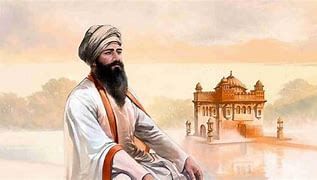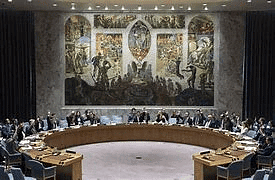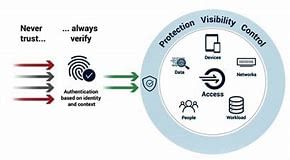UPSC Daily Current Affairs- 18th December 2023 | Current Affairs & Hindu Analysis: Daily, Weekly & Monthly PDF Download
GS-I
Mount Vinson
Subject: Geography

Why in News?
Recently, Kerala government employee Shaikh Hassan Khan has climbed Mount Vinson.
About the Mount Vinson:
- It is the highest mountain in Antarctica.
- Mount Vinson rises 4,892 metres (16,050 feet) above sea level.
- It is part of the Sentinel Range of the Ellsworth Mountains, near the Ronne Ice Shelf.
- There are five other tall mountains in the same area as Mount Vinson—the next five highest summits on the continent of Antarctica—which are collectively referred to as Vinson Massif.
- It is located about 1,200 kilometres from the South Pole, one of the coldest places on Earth.
Key facts about the Ellsworth Mountains:
- The Ellsworth Mountains are the mountain ranges in Antarctica.
- They are forming a 360 km (224 mi) long and 48 km (30 mi) wide chain of mountains in a north to south configuration.
- Also, they are bisected by Minnesota Glacier to form the Sentinel Range to the north and the Heritage Range to the south.
- The former is by far the higher and more spectacular with Mount Vinson (4,892 m) constituting the highest point on the continent.
Source: The Hindu
Guru Teg Bahadur
Subject: History and Culture

Why in News?
Recently, the Prime Minister of India paid tributes to Sri Guru Teg Bahadur on his martyrdom day.
About the Guru Teg Bahadur:
- Guru Teg Bahadur’s name earlier was Teyag Mal.
- He was the ninth of ten Gurus of the Sikh religion.
- His father and the sixth Guru of Sikhs, Guru Hargobind Sahib (1595-1644) changed the name to Teg Bahadur.
- He got his name from his fighting and sword skills on the battlefield.
- Works:
- He built the city of Anandpur Sahib (in Rupnagar/Ropar district, on the edge of Shivalik Hills, near the Sutlej River, in Punjab). Here the last two Sikh Gurus lived and where Guru Gobind Singh founded the Khalsa Panth in 1699.
- He contributed more than 100 poetic hymns to Granth Sahib which cover various topics, such as the nature of God, human attachments, body, mind, dignity, service etc.
- He was instrumental in the conciliation between Raja Bishan Singh and Raja Paranpal, thus avoiding a war.
- He was first arrested by the Mughals on the orders of Aurangzeb in 1665.
- He was publicly beheaded in 1675 on the orders of Mughal emperor Aurangzeb in Delhi.
Source: Indian Express
GS-II
Ex-Parte Decree
Subject: Polity

Why in News?
The Supreme Court recently held that a Civil Revision Petition under Section 115 of the Code of Civil Procedure, 1908 (CPC) is not maintainable against the dismissal of an application filed under Order IX Rule 13 of the CPC to set aside an ex-parte decree.
About Ex-Parte Decree:
- An ‘Ex parte decree’ is a decree passed against a defendant in absentia.
- Even after a summons is served, if only the plaintiff shows up for the hearing and the defendant does not, the court may proceed to hear the lawsuit ex parte and issue a decree against the defendant.
- The legal validity, enforceability, and operation of such a decree are similar to those of any bipartite decree.
- Can an Ex-Parte Decree be set aside?
- Courts generally aim to ensure fairness and due process, and if a genuine reason for the party’s absence is established, the ex-parte order can be set aside, allowing for a re-evaluation of the case with both parties present.
- The defendant against whom an ex-parte decree is passed, can file an application to the court that passed such a decree to set it aside on two grounds:
- Summons were not duly served upon him.
- He was prevented by sufficient cause from appearing before court.
- As per the CPC, there is no specific time limit mentioned to file an application to set aside the ex-parte order, but it is advisable to file the application as soon as possible after becoming aware of the ex-parte order.
- Supporting Evidence: The applicant should provide supporting evidence to substantiate their claim. For example, if the ground for setting aside the order is improper service of summons, the applicant may need to provide proof that the summons was not served correctly.
- Hearing: The court will schedule a hearing to consider the application. The court will assess the validity of the grounds presented by the applicant and may inquire into the circumstances that led to the ex-parte order.
- Discretion of the Court:
- The court has the discretion to decide whether the grounds presented are sufficient and whether the ex-parte order should be set aside.
- The court may also impose conditions and terms, including costs and other factors, when setting aside the order.
Source: Live Law
School of Happiness in Assam
Subject: Governance

Why in News?
Assam’s Bodoland Territorial Region (BTR) is set to launch the International School of Peace and Happiness, a pioneering institution dedicated to teaching lessons on humanity and societal happiness.
School of Happiness: A Backgrounder
- Bodoland Territorial Council’s Initiative: The Bodoland Territorial Council (BTC), which governs the BTR, has been planning this project for a year.
- Addressing Regional Conflicts: The BTR has experienced ethnic conflicts and extremism. The school aims to instill human values and co-existence in a region marked by diverse faiths, cultures, and ethnicities.
- BTC’s Vision: It emphasizes the need for formal schooling in peace-building and happiness to create peace ambassadors for conflict resolution.
Genesis of the School
- Pilot Project: The concept originated from the Bodoland Happiness Mission, a pilot project introduced a year ago.
- Training Peace Volunteers: Around 400 youth and community leaders were trained as peace and happiness volunteers at Bodoland Community Counselling Centres.
- Training Focus: The program included awareness of social issue-related laws, bias removal, self-awareness, counselling techniques, and stress management.
Source: The Hindu
Why only 5 countries have Veto Power in UNSC?
Subject: International Relations

Why in News?
A recent UN resolution vote, where 153 countries voted in favor and 10 against, including the USA’s support for Israel, underscores the influence of a few nations in global decisions.
- This voting pattern brings into focus the veto powers within the UN Security Council (UNSC) and their persistence for over seven decades.
What is the Veto Power in the UNSC?
- Exclusive Membership: The UNSC comprises five permanent members (P5) – the USA, UK, France, Russia, and China – along with 10 non-permanent members.
- Power of Resolutions: Unlike the General Assembly, resolutions passed by the UNSC are legally binding.
- Veto Mechanism: Any P5 member can veto a resolution, blocking its adoption even with the required majority support.
Rationale behind Veto Power for Permanent Members
- Post-WWII Context: The P5, instrumental in forming the UN after World War II, were granted special rights, including veto power, as recognition of their role.
- Strategic Necessity: The veto was considered vital to ensure the participation of these major powers in global peacekeeping efforts.
Formation and Evolution of the UN and Veto Power
- Foundational Discussions: The structure of veto power was developed during key meetings like the Dumbarton Oaks and Yalta Conferences.
- FDR’s Influence: President Franklin D. Roosevelt envisioned the UN as a post-war peacekeeping body, with the ‘Four Policemen’ (USA, USSR, UK, and China) at its core.
- USA’s Diplomatic Efforts: The United States employed strategies, including intelligence, to secure veto power in the UN Charter.
Debate and Criticism of the Veto Power
- Global Dissatisfaction: The exclusive nature of veto power has been a point of contention for many countries.
- Resistance to Change: Attempts to expand the P5 or modify veto rights have been largely unsuccessful due to the vested interests of the permanent members.
- Acknowledging Changes: The increase in non-permanent UNSC members in 1965 was a nod to the changing international environment.
- Reforms agenda: Proposals include making all 15 seats temporary with five-year terms, encouraging open competition for seats, and imposing lobbying and term limits.
Conclusion
- Continued Discussions: The use of veto power in the UNSC remains a contentious issue, reflecting the complex nature of global politics.
- Adapting to Modern Times: As the world’s political landscape evolves, there may be growing pressure to reform the UNSC’s structure and veto mechanism to better align with the current global order.
Source: The Hindu
GS-III
Significance of Surat Diamond Bourse
Subject: Economics

Why in News?
India will be among the world’s three largest economies during his third term in office, PM Modi said, while inaugurating the Surat Diamond Bourse.
About Surat Diamond Bourse:
- About
- The Surat Diamond Bourse (SDB) launched by former Chief Minister of Gujarat, Smt. Anandiben Patel, in February 2015.
- The SDB is a diamond trade centre located at DREAM (Diamond Research and Mercantile) city in Surat, Gujarat.
- The city is also known as "diamond city" for its diamond industry which processes 85 to 90% of the world's rough diamond here.
- It is the world's largest diamond trading hub with a floor space of 660,000 square metres, as well as the world's largest office building, ahead of The Pentagon.
- Theme
- The thematic landscaping of the project is based on the ‘panch tatva’ theme, representing the five elements of nature – air, water, fire, earth, and sky.
- Features
- It will be a global centre for trading of both rough and polished diamonds as well as jewellery.
- From cutting, polishing, and trading activities, the Surat Diamond Bourse will bring brings together a vast community under one roof.
- Bourse will comprise state-of-the-art ‘Customs Clearance House’ for Import – Export; a Jewellery mall for retail jewellery business and a facility for International Banking and Safe Vaults.
- It will be a global centre for trading of both rough and polished diamonds as well as jewellery.
Significance of the SDB Project:
- The SDB will house various diamond-related businesses, including the sale of rough and polished diamonds, diamond manufacturing machinery, diamond planning software, diamond certificate firms, lab-grown diamonds, and more.
- The SDB is expected to generate significant employment opportunities. It is expected to provide direct employment to over 1.5 lakh people in various roles related to the diamond industry.
- The complex is a pre-certified green building by the Indian Green Building Council (IGBC) because of its eco-friendly and sustainability measures adopted to function itself.
About DREAM City:
- Diamond Research and Mercantile City is an upcoming business district in Surat.
- It is being built on 810 hectares (2,000 acres) of land near Khajod, along the lines of the Gujarat International Finance Tec (GIFT) City and Dholera Smart city near Ahmedabad.
- The district is projected to have office space, residential areas, and facilities for these residential areas.
- It will be established and run by a special purpose vehicle formed by the Government of Gujarat.
- Expected to open in 2030, it will be Gujarat's third smart city.
News Summary:
- PM Modi inaugurated the Surat Diamond Bourse in Surat, Gujarat.
- Addressing the gathering, the Prime Minister remarked that a new diamond has been added to the magnificence of Surat city.
- The Prime Minister also mentioned the inauguration of a new airport terminal at Surat and the elevation of the status of Surat Airport as an International airport.
- He said that in his third innings as the Prime Minister, India will be among the top 3 economies of the world.
Source: The Hindu
Zero Trust Authentication (ZTA)
Subject: Security Issues

Why in News?
- In response to rising cyberattacks, the Centre has established a secure e-mail system for 10,000 users across critical ministries and departments.
- The National Informatics Centre (NIC) has designed this system, incorporating Zero Trust Authentication (ZTA).
What is Zero Trust Authentication (ZTA)?
- ZTA is a security concept and framework that operates on the principle of “never trust, always verify.”
- This approach to cybersecurity is a significant shift from traditional security models that operated under the assumption that everything inside an organization’s network should be trusted.
- In contrast, Zero Trust assumes that trust is never granted implicitly but must be continually evaluated and authenticated, regardless of the user’s location or the network’s perimeter.
Key Principles of ZTA
- Least Privilege Access: Users are granted only the minimum level of access needed to perform their job functions. This limits the potential damage in case of a security breach.
- Strict User Verification: Every user, whether inside or outside the organization’s network, must be authenticated, authorized, and continuously validated for security configuration and posture before being granted access to applications and data.
- Micro-segmentation: The network is divided into small zones to maintain separate access for separate parts of the network. If one segment is breached, the others remain secure.
- Multi-Factor Authentication (MFA): ZTA often requires multiple pieces of evidence to authenticate a user’s identity. This could include something the user knows (password), something the user has (security token), and something the user is (biometric verification).
- Continuous Monitoring and Validation: The system continuously monitors and validates that the traffic and data are secure and that the user’s behaviour aligns with the expected patterns.
Implementation of Zero Trust Authentication
- Technology: Implementation of Zero Trust requires technologies like identity and access management (IAM), data encryption, endpoint security, and network segmentation tools.
- Policy and Governance: Organizations need to establish comprehensive security policies that enforce Zero Trust principles, including how data is accessed and protected.
- User Education and Awareness: Training users on the importance of cybersecurity and the role they play in maintaining it is crucial.
Benefits of Zero Trust Authentication
- Enhanced Security Posture: By verifying every user and device, Zero Trust reduces the attack surface and mitigates the risk of internal threats.
- Data Protection: Sensitive data is better protected through stringent access controls and encryption.
- Compliance: Helps in meeting regulatory requirements by providing detailed logs and reports on user activities and data access.
- Adaptability: Zero Trust is adaptable to a variety of IT environments, including cloud and hybrid systems.
Source: The Hindu
Cassini Data reveals organic molecules in Enceladus’s Plume
Subject: Science and Technology
Why in News?
A re-analysis of data from the Cassini mission has revealed a complex mix of molecules in the gaseous plumes of Saturn’s moon Enceladus.
About Cassini Mission
| Launch Date | October 15, 1997 |
| Mission Agencies | NASA, European Space Agency (ESA), Italian Space Agency (ASI) |
| Primary Focus | Study of Saturn, its rings, moons, and magnetosphere |
| Key Objectives |
|
| Major Achievements |
|
| Enceladus Discoveries |
|
| Significant Milestones |
|
| Mission Duration | 1997-2017 (including extended missions) |
Discovery of Plumes and Initial Analysis
- Cassini’s Initial Discovery: In 2005, the Cassini spacecraft discovered large plumes escaping from Enceladus’s southern hemisphere.
- Source of Plumes: These plumes are believed to originate from a subsurface ocean through fissures in the moon’s icy surface.
- Initial Molecular Findings: Earlier analyses identified water, carbon dioxide, methane, ammonia, and molecular hydrogen in the plume samples.
Re-examination of Cassini Data
- Research Team: Led by Jonah Peter from the California Institute of Technology, Pasadena, California.
- Methodology: The team re-examined data using a statistical analysis technique, comparing it against a vast library of known mass spectra.
- Newly Identified Molecules: The analysis revealed the presence of hydrocarbons like hydrogen cyanide (HCN), acetylene (C2H2), propylene (C3H6), ethane (C2H6), along with methanol and molecular oxygen.
Significant Discovery of Nitrogen
- Definite Presence of Nitrogen: The study confirmed the presence of nitrogen in the form of HCN, resolving previous uncertainties due to overlapping signals in mass spectrometry data.
- Potential for Habitability: The diverse chemical reservoir under Enceladus’s surface suggests conditions that might be consistent with a habitable environment.
- Support for Microbial Life: The presence of these compounds, along with mineralogical catalysts and redox gradients, could potentially support microbial communities or complex organic synthesis.
- Caveat on Life Support: The ability of these compounds to support life depends on their concentration in Enceladus’s subsurface ocean.
Source: Indian Express
|
38 videos|5275 docs|1115 tests
|
FAQs on UPSC Daily Current Affairs- 18th December 2023 - Current Affairs & Hindu Analysis: Daily, Weekly & Monthly
| 1. Why does the United Nations Security Council (UNSC) have only 5 countries with veto power? |  |
| 2. What is the significance of the Surat Diamond Bourse? |  |
| 3. What is Zero Trust Authentication (ZTA)? |  |
| 4. What is an ex-parte decree? |  |
| 5. What is the School of Happiness in Assam? |  |
















